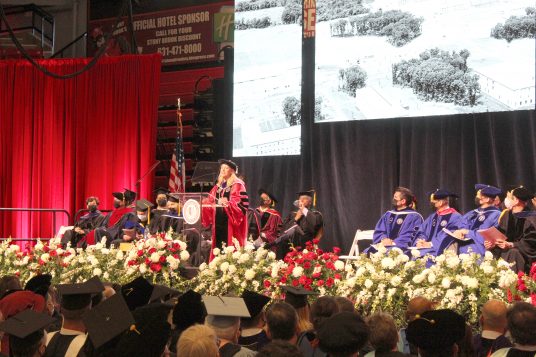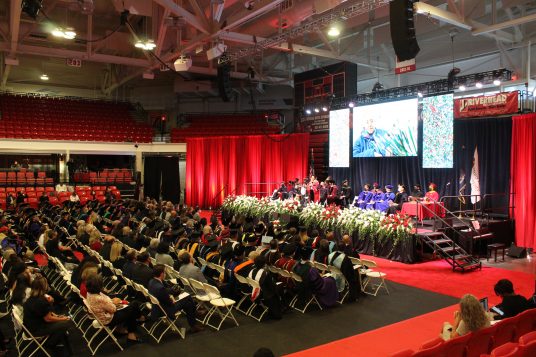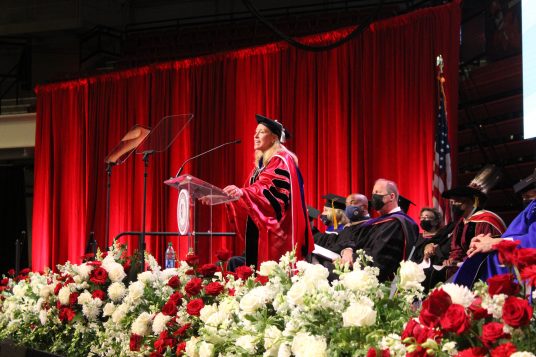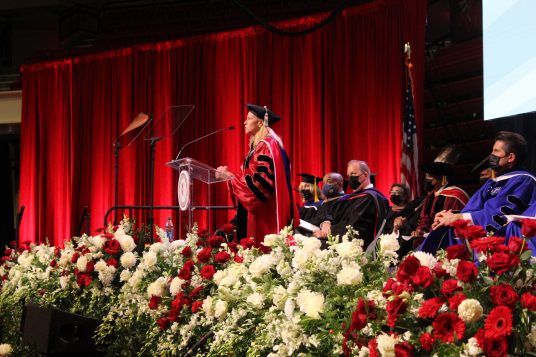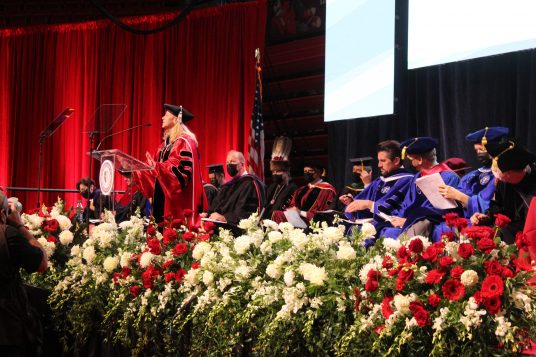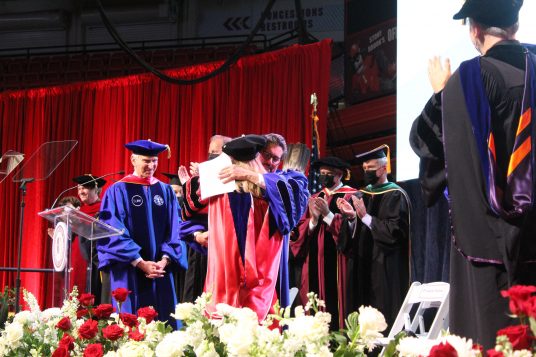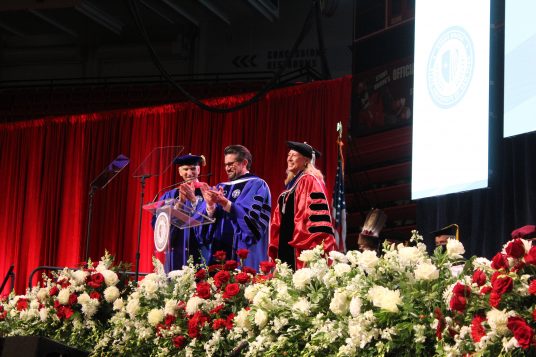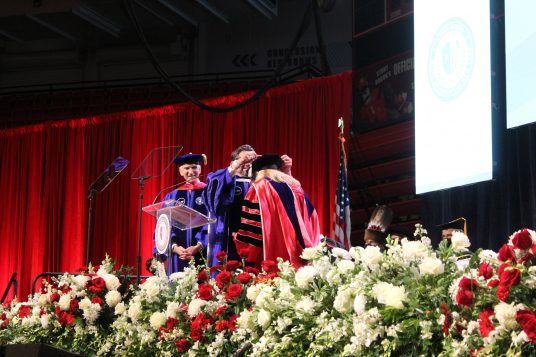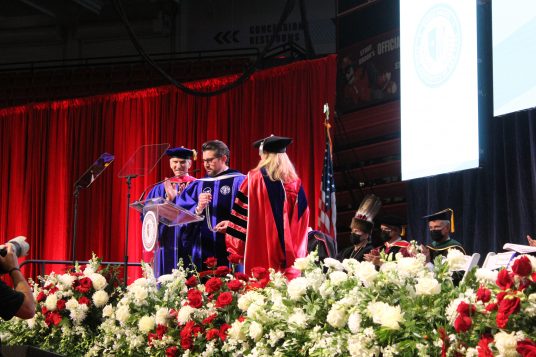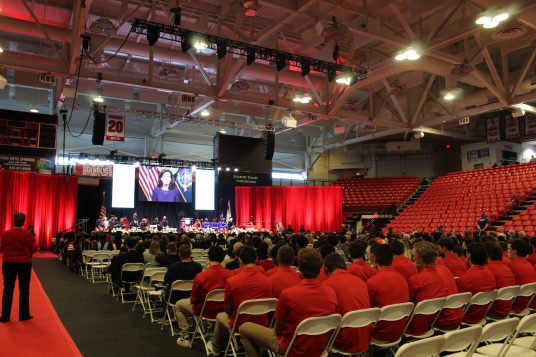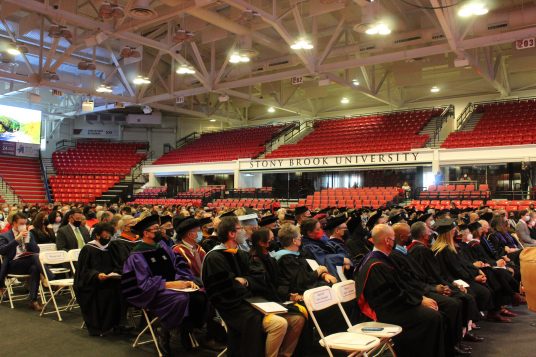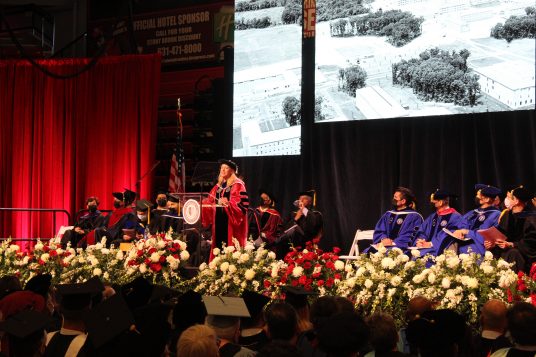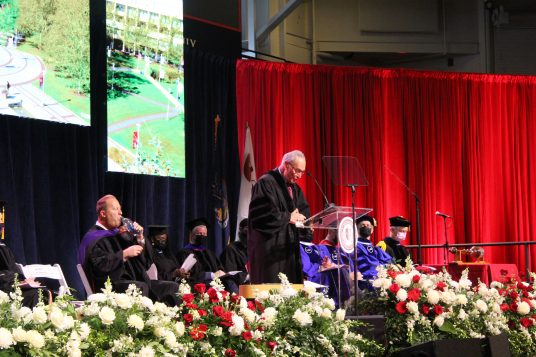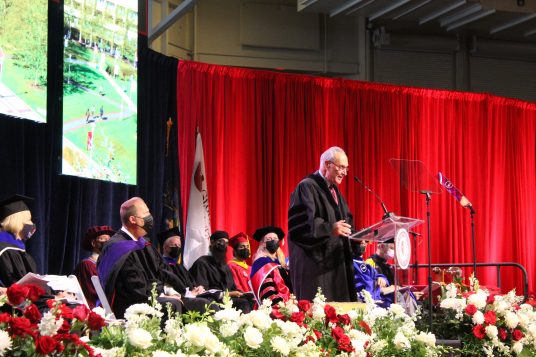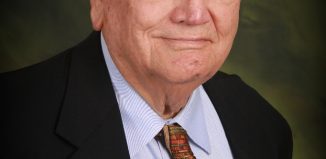Maurie McInnis is inaugurated as Stony Brook University’s sixth president
By Kimberly Brown
Stony Brook University celebrated the inauguration of Maurie McInnis as the university’s sixth president on Saturday, Oct. 23, at the Island Federal Arena, Stony Brook.
Standing before students, alumni, local officials and representatives from universities across the country as well as family and friends, McInnis was proudly given her title as president.
Transporting the crowd back to 1962, when Stony Brook University was merely a handful of buildings that has sprouted out of a field where potatoes were farmed, McInnis said the 800 students who first began their journey at the university would know that big plans were in the works.
“Out of these potato fields and muddy woods on Long Island, an educational powerhouse would soon emerge, and in less than a decade our university grew ten-fold to 8,000 students and ambitiously recruited the faculty and staff that would come to define this institution,” McInnis said.
Nobel Prize-winning physicist Chen Ning Yang came to Stony Brook in 1965 and became the university’s first director of the Institute of Theoretical Physics. To which McInnis said he must have sensed the university was making big moves and breaking new ground in areas of science.
“Looking around the arena today, I see that same bold spirit that attracted Yang and legions of other distinguished faculty,” she said. “Thank you for joining me as we celebrate the luminous and ambitious future of Stony Brook University.”
McInnis thanked the crowd for trusting her to lead the institution.
Also touching on her own family’s heritage, which is rich in careers of education, she mentioned her great-grandparents and grandparents were both teachers. Her parents were also college professors and her husband is a first-generation college graduate.
“I have dedicated my life’s work to this enterprise and I am thrilled and honored to apply my knowledge, experience and energy to Stony Brook University,” she said. “What I have learned is that our institution yesterday, today and tomorrow is a university of dreaming big, of expanding the reach of discovery and creating knowledge for the benefit of society.”
In 1973, the university welcomed Rich Gelfond, who came from a disadvantaged household in Plainview.
Stepping foot onto the campus for the first time as a college student, Gelfond went full force in his academics by working on the school newspaper, designing his own curriculum, winning an election to be the first student on the university council as well as guest teaching at his own sports sociology class.
“He was delivering on his potential, and then some, because he had found a university that valued the promise of first-generation college students,” she said. “He had found a university that wanted to empower its students to be their best.”
McInnis said after college, Gelfond went on to be a successful investment banker, acquiring IMAX Corporation in 1994 where he remains CEO today.
Touching on the topic of COVID-19, McInnis said she is proud of the way Stony Brook University has succeeded in the past year and a half by providing superior patient care and extending its reach across Long Island to care for new communities.
“The power of a public research university is that it has the ability and the duty to benefit the community around it, as well as foster the groundbreaking discoveries that can impact the world for generations to come,” she said.
As the university’s newest president, McInnis wants to ensure that Stony Brook is leading the way, serving the community and tackling the global challenges that face us in the coming century.
“I look forward to seeing all that we can achieve,” she said. “The moment is upon us. Seawolves, let’s answer this call to greatness.”
As chief executive for Stony Brook, McInnis also oversees Stony Brook Medicine, Long Island’s premier academic medical center, which encompasses five health sciences schools, four hospitals and 200 community-based health care settings.

